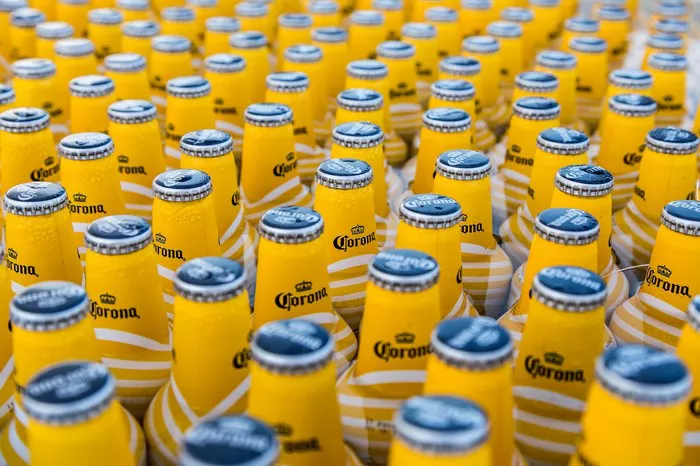From its humble beginnings thousands of years ago to its current status as one of the most beloved beverages worldwide, beer has undergone an extraordinary evolution. As enthusiasts and connoisseurs delve deeper into its complexities, one question often arises: how many kinds of beer are there? This inquiry serves as a gateway to the diverse and rich tapestry of the beer world, where countless styles, flavors, and brewing techniques await exploration.
Understanding Beer Categories
To comprehend the sheer breadth of beer varieties available, it’s essential to grasp the categorization systems used within the brewing industry. While there are various classification methods, the most common approach involves grouping beers into broad categories such as ales, lagers, and hybrids. Within these categories lie an array of substyles, each distinguished by unique ingredients, brewing processes, and cultural influences. Exploring these categories is crucial in answering the question: how many kinds of beer are there?
Ales: A World of Diversity
Ales represent one of the oldest and most diverse categories of beer. Brewed with top-fermenting yeast strains at warmer temperatures, ales encompass a vast spectrum of flavors and aromas. From the robust bitterness of India Pale Ales (IPAs) to the fruity esters of Belgian Dubbels, the range of ale styles is staggering. Exploring the intricate nuances within this category provides a glimpse into the creativity and innovation driving the contemporary craft beer movement, offering a compelling answer to the question: how many kinds of beer are there?
Lagers: Crisp and Refreshing
In contrast to ales, lagers are fermented with bottom-fermenting yeast strains at cooler temperatures, resulting in a cleaner and crisper profile. While lagers may not boast the same diversity as ales, they encompass a multitude of popular styles enjoyed worldwide. From the pale, straw-colored brilliance of Pilsners to the malty richness of Märzens, lagers offer a refreshing alternative with broad appeal. Exploring the subtleties within the lager category provides valuable insight into the question of how many kinds of beer are there.
See Also: heineken country origin
Hybrids: Pushing Boundaries
As the craft beer movement continues to flourish, brewers are increasingly experimenting with hybrid styles that defy traditional categorization. Blurring the lines between ales and lagers, these innovative creations combine elements from both categories to produce truly unique flavor profiles. Whether it’s the hoppy intensity of California Common or the tart complexity of Kölsch, hybrid beers exemplify the spirit of exploration and ingenuity within the brewing community, expanding the answer to the question: how many kinds of beer are there?
Regional Specialties: Celebrating Diversity
Beyond the broad categories of ales, lagers, and hybrids, beer enthusiasts can embark on a journey of discovery by exploring regional specialties from around the globe. From the rich, malty Dunkels of Germany to the spicy, aromatic Saisons of Belgium, each region boasts its own distinct brewing traditions and flavor profiles. Sampling these regional specialties not only expands one’s palate but also provides a deeper understanding of the cultural significance of beer, offering a multifaceted response to the question of how many kinds of beer are there.
Crafting New Frontiers: Experimental Brews
As the boundaries of beer continue to expand, brewers are embracing experimentation with novel ingredients and techniques to push the limits of traditional brewing. From barrel-aged stouts infused with exotic spices to sour ales fermented with wild yeast strains, experimental brews represent the vanguard of innovation within the industry. Exploring these avant-garde offerings offers a glimpse into the future of beer, showcasing endless possibilities and reaffirming the boundless nature of the answer to the question: how many kinds of beer are there?
The Art of Homebrewing: Infinite Potential
For many beer enthusiasts, the allure of homebrewing lies in the opportunity to craft personalized creations tailored to individual tastes and preferences. With a plethora of ingredients and brewing methods at their disposal, homebrewers have the freedom to experiment and innovate without constraints. Whether it’s a classic pale ale infused with tropical hops or a complex barrel-aged sour, the world of homebrewing adds yet another layer of diversity to the answer to the question of how many kinds of beer are there.
Cultural Significance: A Unifying Beverage
Beyond its myriad flavors and styles, beer holds immense cultural significance as a unifying beverage that brings people together across geographical and social boundaries. From ancient rituals and religious ceremonies to modern-day celebrations and gatherings, beer has played a central role in human history for millennia. Exploring its cultural significance underscores the universal appeal of beer and reinforces the notion that its varieties are as diverse as the communities that embrace them, offering a profound answer to the question: how many kinds of beer are there?
Conclusion: The Ever-Expanding Universe of Beer
In conclusion, the question of how many kinds of beer are there is as complex and multifaceted as the beverage itself. From traditional styles rooted in centuries-old brewing traditions to innovative creations pushing the boundaries of experimentation, the world of beer is a vast and endlessly fascinating realm awaiting exploration. Whether you’re a seasoned enthusiast or a curious novice, embarking on this journey of discovery promises to unveil a rich tapestry of flavors, aromas, and experiences that celebrate the remarkable diversity of beer. So, raise a glass and toast to the endless possibilities that await in the ever-expanding universe of beer.


